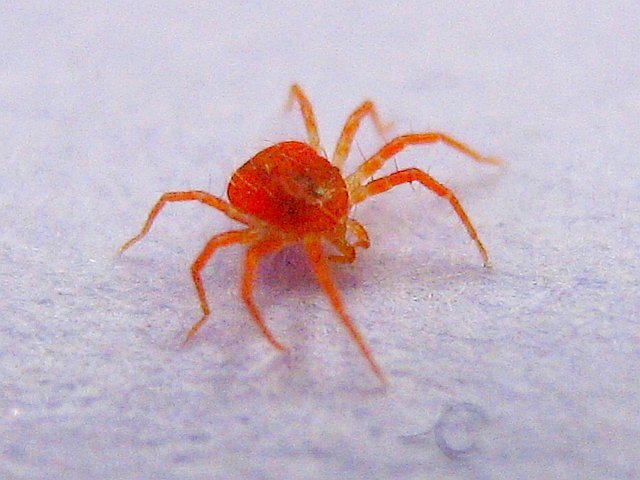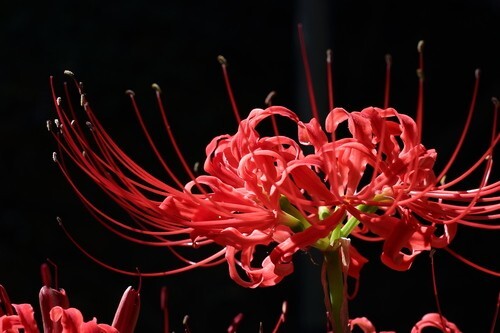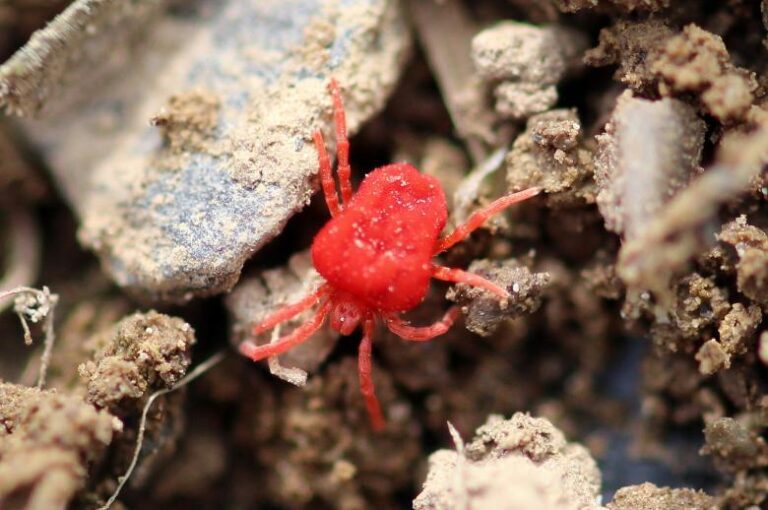A Comprehensive Guide to Identifying Red Spiders
Introduction
What are red spiders?
Red spiders, also known as spider mites, are tiny arachnids that belong to the Tetranychidae family. They are often found on plants and are known for their red coloration, which gives them their name. These pests can cause significant damage to plants by feeding on the sap and nutrients, leading to stunted growth, yellowing leaves, and webbing. Identifying red spiders is crucial for effective pest management and preventing further infestations. By understanding their characteristics and behavior, gardeners and plant enthusiasts can take appropriate measures to control and eliminate these pests.
Why is it important to identify red spiders?
Identifying red spiders is important for several reasons. One of the key reasons is preventing bee stings. Red spiders are known to be attracted to flowers, which are also frequented by bees. By being able to identify red spiders, you can take necessary precautions to prevent bee stings and protect yourself from potential allergic reactions. This knowledge becomes particularly crucial for individuals who spend a lot of time outdoors or have a bee sting allergy. By being aware of the presence of red spiders, you can take appropriate measures to avoid areas where they are prevalent and minimize the risk of encountering them.
Common misconceptions about red spiders
There are several common misconceptions about red spiders that are important to address. One of the most prevalent facts is that red spiders are not actually spiders at all, but rather a type of mite. This misconception often leads to confusion and misidentification. Additionally, another common misconception is that all red spiders are harmful or dangerous. While some species of red spiders can be pests in certain agricultural settings, the majority are harmless and play important roles in ecosystems. It is important to dispel these misconceptions and educate the public about the true nature of red spiders.
Physical Characteristics
Size and color
Red spiders come in a variety of sizes and colors, making it important to understand the difference between them. When it comes to size, red spiders can range from tiny specks to larger, more noticeable creatures. The color of red spiders can also vary, with shades ranging from a vibrant red to a deep maroon. By recognizing the differences in size and color, individuals can better identify and differentiate between different species of red spiders.
Body structure
The body structure of red spiders is unique and distinctive. One key characteristic is the presence of spots on their bodies. These spots can vary in size and color, and are often used as a means of identification. By examining the number, pattern, and arrangement of spots, experts can determine the species of red spider. Additionally, the location of the spots on the body can provide valuable information about the spider’s habitat and behavior.
Web patterns
Red spiders are known for their intricate web patterns. These patterns can vary greatly depending on the species of spider, but they often include geometric shapes and symmetrical designs. The purpose of these web patterns is to efficiently capture prey and provide a safe and secure environment for the spider. By studying the web patterns of red spiders, researchers can gain valuable insights into their behavior and ecology. Understanding these patterns can also help in the identification and classification of different species of red spiders.
Habitat
Preferred environments
Preferred environments for red spiders vary depending on the species. However, there are some common signs of termite infestations that can help identify potential habitats. These signs include damaged wood, mud tubes, discarded wings, and frass. If you notice any of these signs, it is important to take immediate action to prevent further damage.
Geographical distribution
The geographical distribution of red spiders is widespread, with populations found in various regions across the globe. These tiny arachnids can be found in both temperate and tropical climates, thriving in areas with a suitable habitat. However, they are not commonly found in extremely cold or hot environments. Red spiders are known to infest a wide range of plants, including crops, ornamental plants, and fruit trees. They are particularly problematic for agricultural industries as they can cause significant damage to crops, leading to reduced yields and economic losses. In some regions, red spiders have become a major pest, requiring extensive pest management strategies to control their populations.
Nesting habits
Red spiders have unique nesting habits that set them apart from other arachnids. These spiders prefer to build their nests in warm and dry environments, such as gardens or attics. They often choose hidden and secluded spots to ensure the safety of their eggs and young. Red spiders are known to create intricate and delicate webs to protect their nests from predators. Their nesting habits play a crucial role in their survival and reproductive success.
Behavior
Feeding habits
Red spiders have unique feeding habits that make them fascinating and sometimes creepy crawlers. These tiny arachnids rely on a diet consisting mainly of plant sap. They use their specialized mouthparts to pierce the plant’s surface and extract the necessary nutrients. This feeding method allows red spiders to thrive in various habitats, including gardens, crops, and even indoor plants. The ability of these creatures to survive and reproduce solely on plant sap sets them apart from other spider species. Understanding their feeding habits is crucial for effective pest management and maintaining the health of plants.
Reproduction
Reproduction in red spiders is a fascinating process that involves multiple stages. These arachnids have a unique ability to effectively remove wasp nests from their surroundings, ensuring their own survival. The process begins with the female red spider laying eggs in a protective silk sac. Once the eggs hatch, the young spiders go through several molting stages before reaching maturity. During mating, the male red spider transfers sperm to the female, who stores it until she is ready to fertilize her eggs. This reproductive strategy allows red spiders to adapt and thrive in various environments, including those with potential threats like wasp nests.
Social behavior
Red spiders are known for their unique social behavior. They exhibit fascinating interactions with other members of their species, similar to ants. This social behavior plays a crucial role in their survival and reproduction. Understanding the intricacies of red spider social behavior can provide valuable insights into their ecology and population dynamics.
Identification Methods
Visual identification
Visual identification is an essential step in identifying red spiders. These wood destroying pests can cause significant damage to structures and plants. By being able to visually identify them, you can take the necessary steps to prevent infestations and protect your property. Red spiders are typically small in size and have a distinctive red coloration. They also have eight legs and a characteristic body shape. If you come across any spiders that fit this description and are causing damage to wood or plants, it is important to take immediate action to address the issue.
Behavioral cues
Red spiders exhibit several behavioral cues that can help in their identification. One common behavior is their preference for warm and dry environments. They are often found in gardens, particularly on the undersides of leaves and in webs. Another behavioral cue is their rapid movement when disturbed. Red spiders are known to quickly scuttle away or drop from their web when they sense danger. Additionally, their feeding behavior is characterized by the formation of small, yellowish spots on infested plant leaves. By observing these behavioral cues, it becomes easier to identify and differentiate red spiders from other pests.
Using magnification tools
Using magnification tools is essential when it comes to identifying red spiders. These tools allow you to closely examine the physical characteristics of the spiders, such as their body shape, color, and patterns. By magnifying the spiders, you can also observe their behavior and movements, which can provide valuable clues for identification. Additionally, magnification tools help you distinguish red spiders from other similar-looking species, ensuring accurate identification. Whether you are a professional entomologist or a hobbyist spider enthusiast, using magnification tools is a crucial step in the process of identifying red spiders.
Prevention and Control
Natural predators
Natural predators play a crucial role in controlling the population of red spiders. These predators, such as ladybugs, lacewings, and predatory mites, feed on red spiders and help keep their numbers in check. Ladybugs are particularly effective in controlling red spider infestations as they can consume a large number of these pests in a short period. Lacewings and predatory mites also contribute to the natural control of red spiders by preying on their eggs and young. By encouraging the presence of these natural predators in your garden or agricultural field, you can effectively manage red spider populations without the need for chemical pesticides.
Chemical control methods
Chemical control methods are an effective way to manage red spider infestations. These methods involve the use of pesticides specifically designed to target and eliminate red spiders. When using chemical control methods, it is important to follow the instructions provided by the manufacturer and take necessary precautions to protect yourself and the environment. It is also recommended to consult with a professional pest control expert to ensure the proper application of chemicals and minimize any potential risks. Chemical control methods can be a valuable tool in reducing red spider populations and preserving the health and vitality of plants.
Cultural control practices
Cultural control practices play a crucial role in managing red spiders. One effective method is to carry out regular inspections of plants, especially during the peak season. By doing so, any signs of infestation can be detected early on, allowing for immediate intervention. Additionally, it is important to remove any infected leaves or plants to prevent the spread of the red spiders. Proper sanitation practices, such as cleaning gardening tools and equipment, can also help minimize the risk of infestation. Implementing these cultural control practices is essential in maintaining a healthy and pest-free environment for plants.








